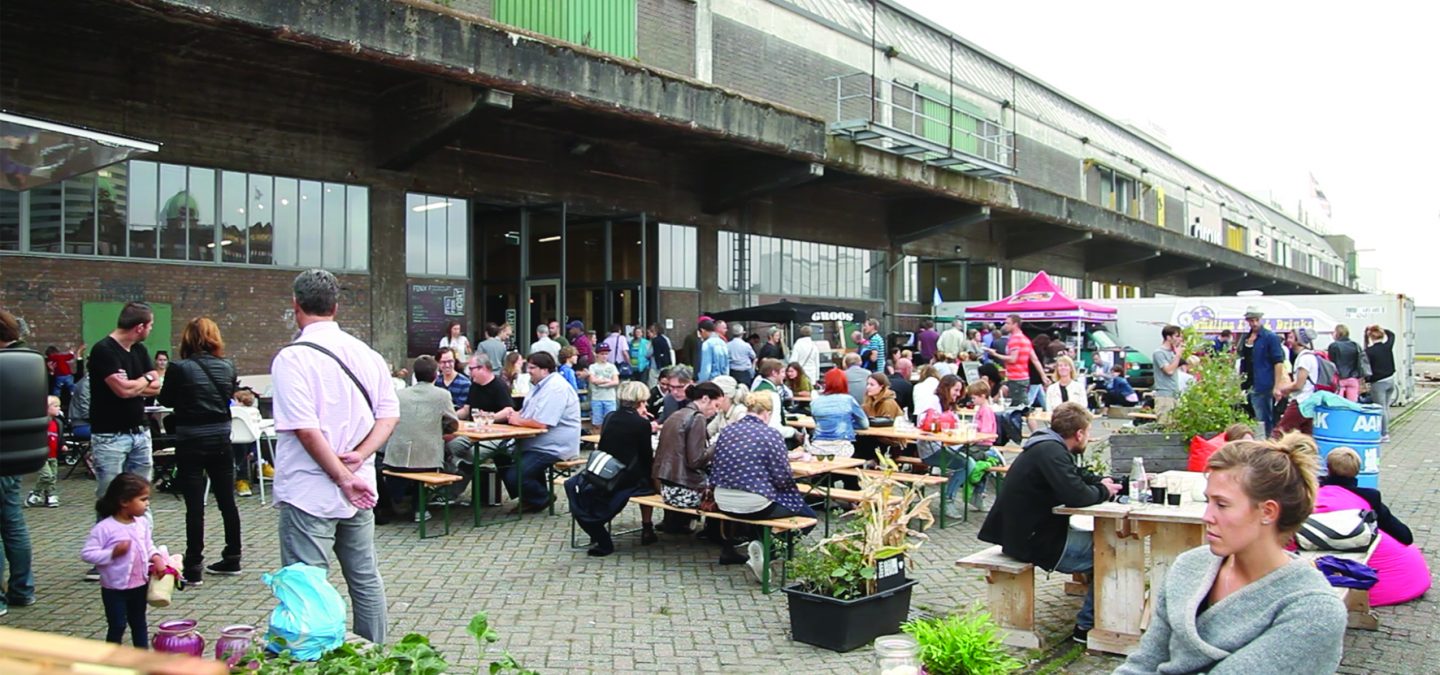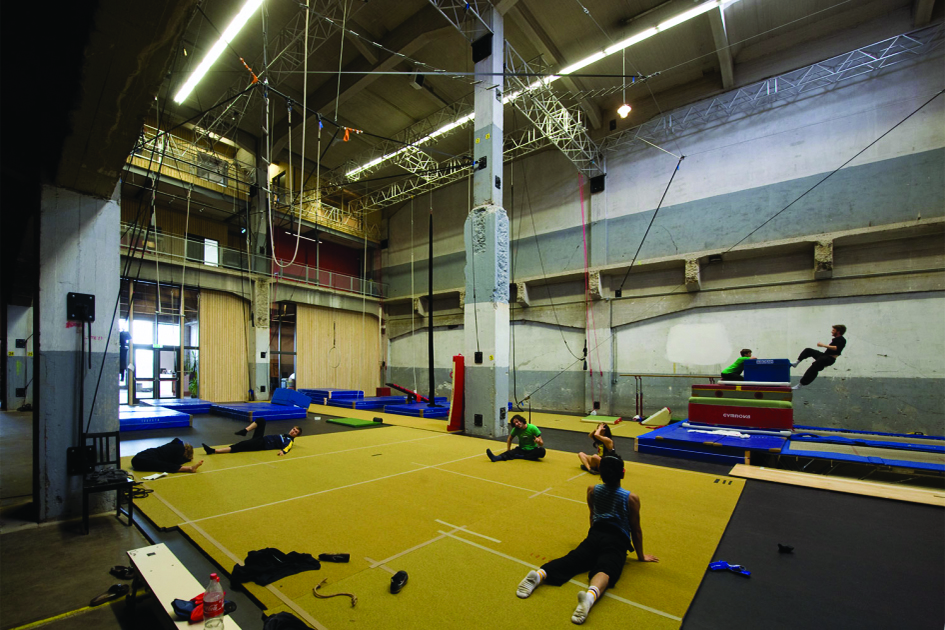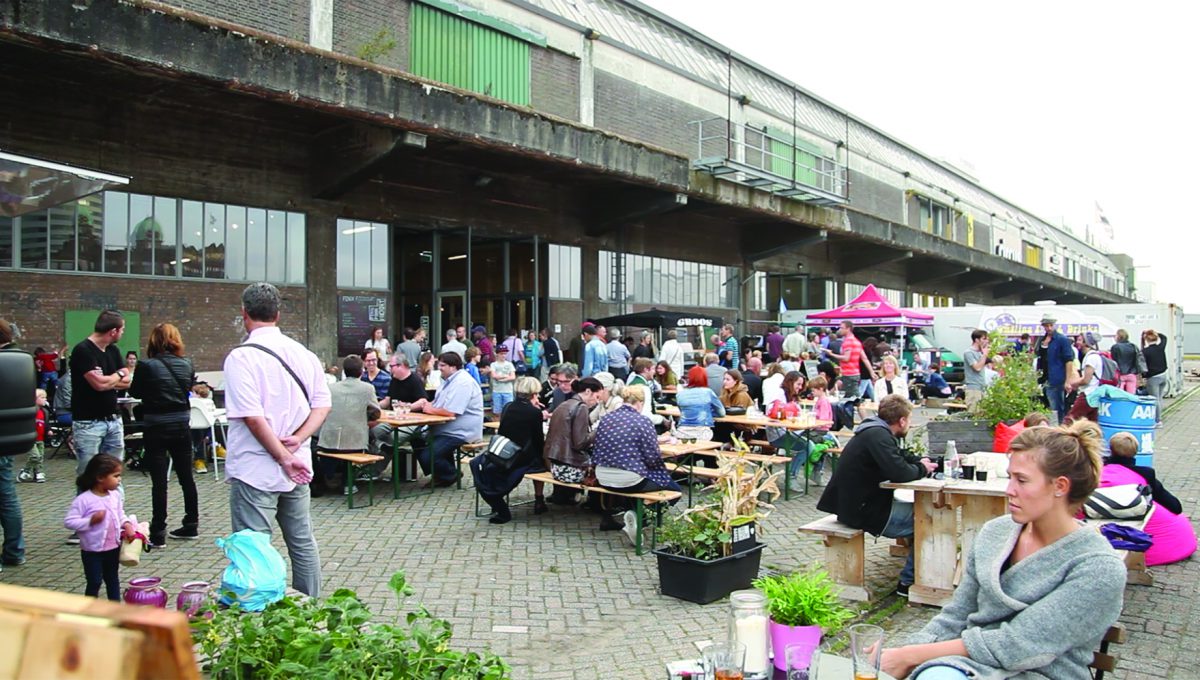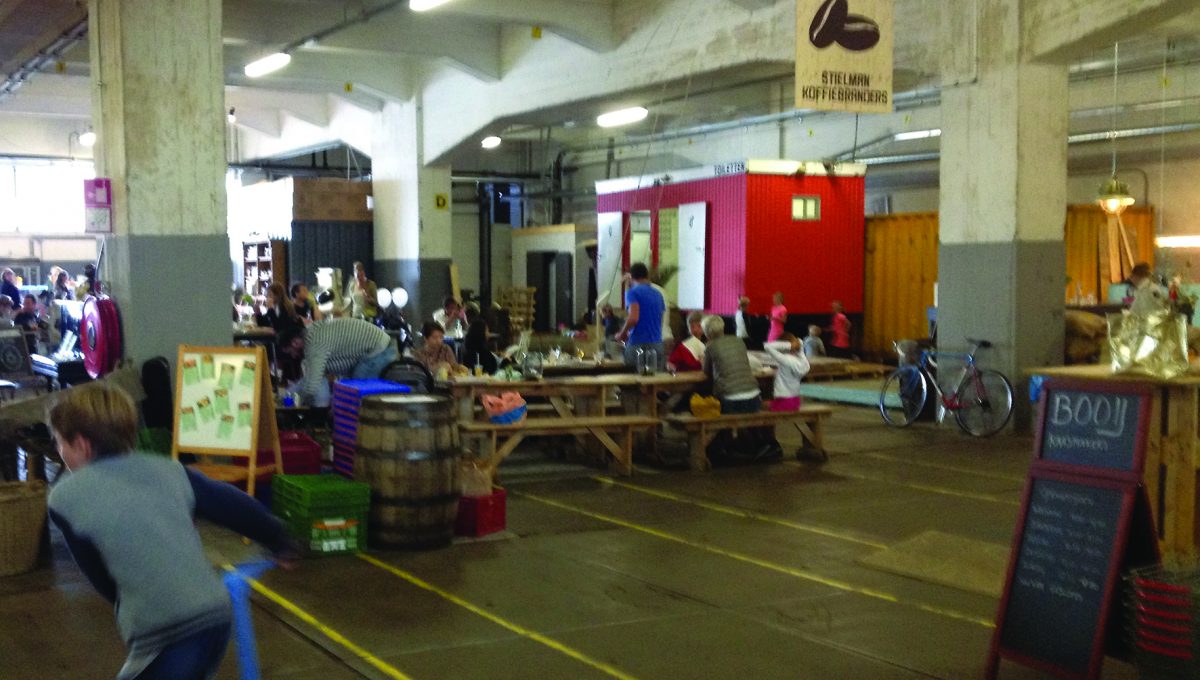
Keep up with our latest news and projects!

Inner-city re-development is a challenge. Urban areas are complex, and working with an existing urban context with many stakeholders and varied target groups is a difficult task. Plans (fortunately) are no longer rolled out as a blueprint, but grow more organically like a network, allowing innovations the opportunity to become part of the solution. This not only demands other forms of cooperation, but also a different attitude from all parties, both public and private. The initiator or the producer holds a powerful role: a long-term commitment to combining and retaining the concept and also keeping all stakeholders together, big and small, formal and informal.
The goal is to create unique, attractive, and lasting environments in a context of change. Structural changes are taking place: technological, demographic, economic, and cultural. All are expressed in different ways with regional variations. As a result, the customer demands are differentiated, less predictable, and expressed more assertively. Innovating is a necessity for meeting the changing demands and, better yet, to exceed expectations. Customers are changing what they want to buy, the people are more diverse, and the way people integrate working, living, nurturing creates new demands. The city infrastructure, public space, facilities, and social and commercial activities need to anticipate those demands.
The biggest misconception is that longterm involvement in re-development areas is not rewarding. The reality is, in order to create value, long-term focus is needed, and involvement is a must. And program, next to quality and design, creates value. If city stakeholders manage development based on (housing) quantity and production, we lose the ability to manage the quality. A high level of supply is the death of differentiation, opportunities, and growth. The best focus is diversity, density of program, and activities, but we can’t solely rely on ground-floor commercial and retail. Cultural programing and activities are big assets, too, especially in temporary to permanent use. To achieve this, residents and local entrepreneurs must be involved on a deeper level. To achieve high quality revitalisation, informal programming is a key. Local ideas should be seen as a way to network and interact, to make plans flexible to new ideas.
Rotterdam, the Netherlands, is a major port city with a lot of space for good value. Interesting target groups capitalise on this asset for pioneering new ideas and activities. If this opportunity is used well in planning, design and strategy, Rotterdam could hold a distinct position in the Netherlands. Imagine the space and good value become an economy on its own. Rotterdam’s rather tough image actually give it an edge over its competitor cities.
 Temporary use: Codarts bachelor’s programme of Circus Arts at Fenixloods, Katendrecht Rotterdam - © Gergo Hevesi
Temporary use: Codarts bachelor’s programme of Circus Arts at Fenixloods, Katendrecht Rotterdam - © Gergo Hevesi
 Loods Rotterdam, The Netherlands - © Gergo Hevesi
Loods Rotterdam, The Netherlands - © Gergo Hevesi
 Fenix Food Factory, Katendrecht Rotterdam - © Gergo Hevesi
Fenix Food Factory, Katendrecht Rotterdam - © Gergo Hevesi
The key to a good business case is to fulfil a need. Suitable to the place, autonomous and authentic to the surroundings. Function and programme should be tested and designed by the laws of the genius loci: the spirit of the location. If not, it’s a failure and there’s nothing more disruptive than a failed urban area.
A good example is the destination and temporary programme of the FenixFoodFactory in the Fenix harbour warehouse on the Rotterdam peninsula, Katendrecht. The FenixFoodFactory created a destination and provided a connection from one end of the harbour to the other end. The Rijnhaven Bridge made the pier accessible and noticeable: a perfect lounge spot to see and to be seen. The rough interior needed no adjustments. Just a basic plan and basic facilities for a diversity of entrepreneurs with local goods, a lot of space to stand, sit and play. All it needed was a good way in and out, and last but not least, a very attractive rent, low enough to give the business a fair chance to be sustainable and high enough to attract (semi) professionals. The return on the investment if they are successful, for the entrepreneurs is a place in the final destination if they want to. The real profit is for the people and the city.
The key to make a good business case is the intersection between economic and social demands. Improving areas is difficult and timeconsuming, and a good earning model is not always in reach. Make the area a destination with an identity; give people a reason to live in and be a part of a community. Offer interesting and diverse programme, the time and temporary use to demonstrate sustainability and value growth.
When public and private partners, formal and informal, designers and programme ‘meet up’ and share power it means they also share success. And, in the end, it can also mean sharing the inner city profit.
Interested? Join The City At Eye Level and share your story!
Discover more